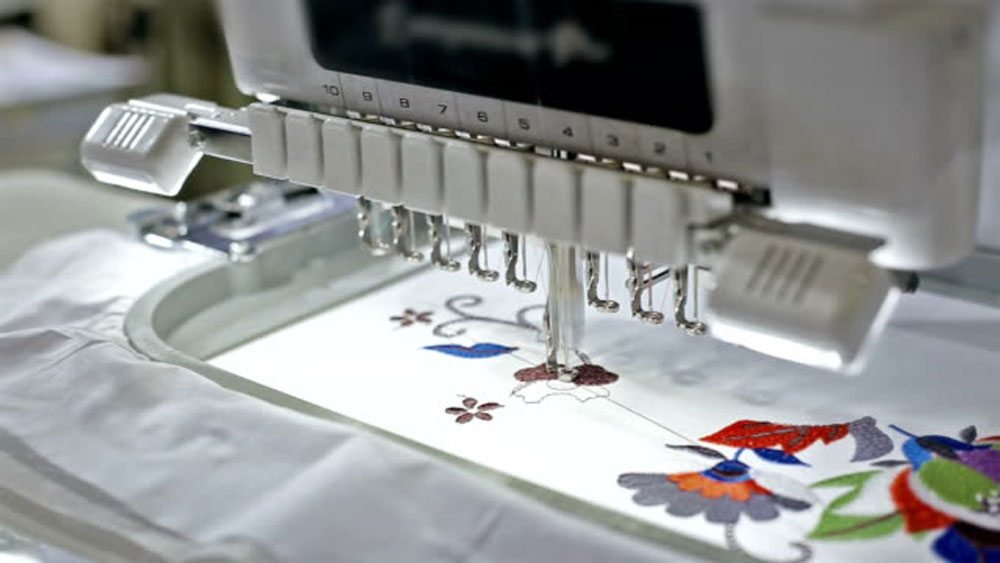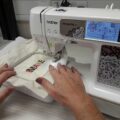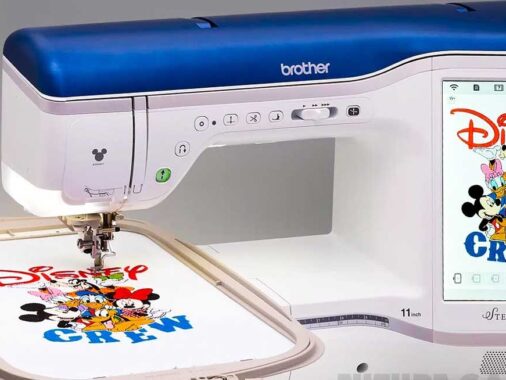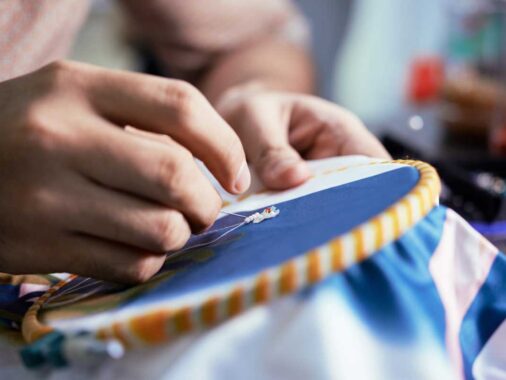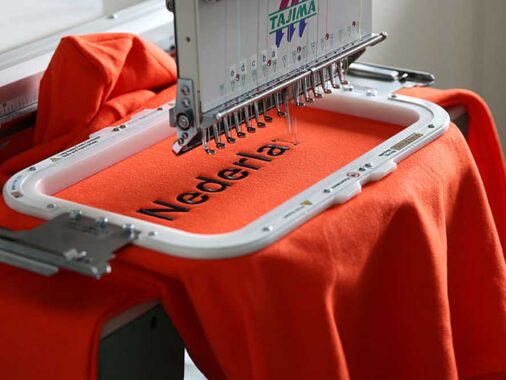Embroidery machines can make adding intricate designs to fabric much easier and faster. The Babylock brand of embroidery machines are especially known for their user-friendly features and high-quality results. Whether you’re a beginner or experienced sewer, this guide will help you understand how to use a Babylock embroidery machine to its full potential.
Getting to Know Your Babylock Embroidery Machine
Before you start using your Babylock embroidery machine, it’s important to get familiar with all of its features and components.
Machine Parts and Features
- LCD Touchscreen Display: This is where you’ll select designs, change thread colors, and see a preview of your design before you start stitching.
- Hoop: This is the frame that holds your fabric in place as the machine stitches. Babylock machines come with several different sizes of hoops, so you can choose the one that best fits your project.
- Needle: Your machine will come with at least one needle that you’ll use for stitching. Babylock machines are compatible with a wide range of needle sizes, so you can choose the one that’s best for your fabric and design.
- Bobbin Case: The bobbin case holds the bobbin, which is the thread that is wound on the bottom side of the fabric.
- Thread Spools: Your machine will come with a number of thread spools, which you’ll use to stitch your designs.
Understanding the LCD Touchscreen Display
The LCD touchscreen display is the central control panel for your Babylock embroidery machine. You’ll use it to select designs, change thread colors, and preview your design before you start stitching. The display will also show you the current status of your machine, including the remaining stitch count and the current stitch speed.
Preparing to Stitch
Choosing Your Fabric
When choosing your fabric, keep in mind that lighter weight fabrics like cotton or silk work best with embroidery. Sturdier fabrics like denim or canvas can be used, but they may cause more wear and tear on your machine.
Hooping Your Fabric
Hooping your fabric is the process of securing it in the hoop so that it doesn’t move as the machine stitches. Here’s how to hoop your fabric:
- Place the hoop on your machine and tighten the screws to secure it in place.
- Lay your fabric over the hoop and center it.
- Pull the bottom fabric taut and place it in the bottom part of the hoop.
- Pull the top fabric taut and place it in the top part of the hoop, being careful to avoid any wrinkles.
- Tighten the screws on the hoop to secure the fabric in place.

Loading Your Bobbin
Before you start stitching, you’ll need to load the bobbin with thread. Here’s how:
- Remove the bobbin case from the machine.
- Wind the thread onto the bobbin, being careful to keep the thread tight.
- Place the bobbin in the bobbin case, making sure it’s loaded correctly.
- Replace the bobbin case in the machine.
Stitching Your Design
Selecting Your Design
To select a design, simply touch the “Designs” button on the LCD touchscreen display. From there, you can choose from a wide range of built-in designs or upload your own.
Changing Thread Colors
If your design requires multiple thread colors, you’ll need to change the thread for each color change in the design. To change the thread color, follow these steps:
- Touch the “Thread” button on the LCD touchscreen display.
- Select the desired color from the thread color library or create a custom color.
- Cut the current thread and replace it with the new thread.
Previewing Your Design
Before you start stitching, it’s a good idea to preview your design on the LCD touchscreen display to make sure it looks the way you want it to. You can also adjust the size, orientation, and placement of the design on the fabric.
Stitching Your Design
Once you’re ready to start stitching, simply touch the “Start” button on the LCD touchscreen display. The machine will begin stitching your design, and the LCD touchscreen display will show you the progress of the stitching and any thread color changes.
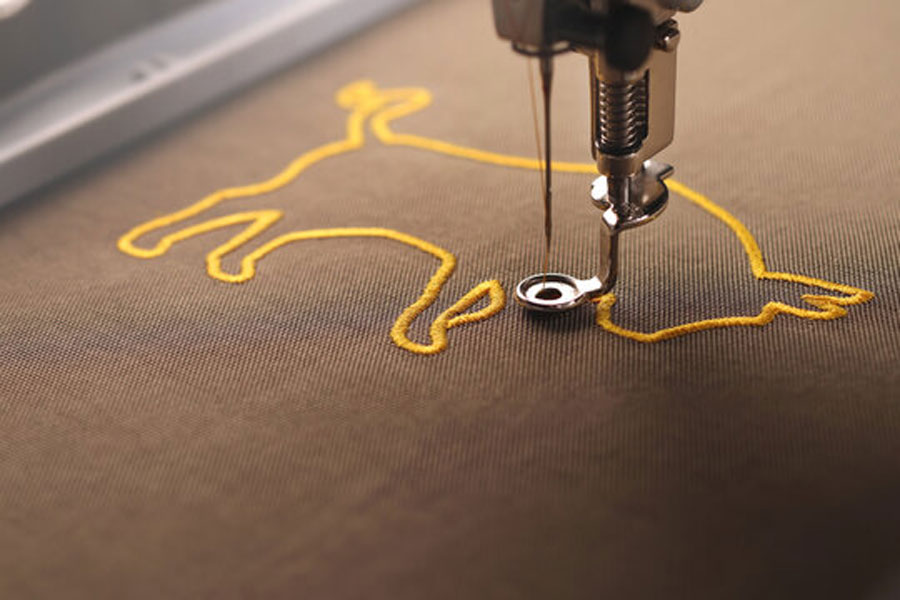
Caring for Your Babylock Embroidery Machine
To keep your Babylock embroidery machine in top condition, it’s important to clean and maintain it regularly. Here are some tips for caring for your machine:
Cleaning the Machine
After each use, be sure to clean your machine of any lint or thread residue. Use a lint brush or canned air to remove any debris from the needle area, and wipe down the exterior of the machine with a soft, dry cloth.
Oil the Machine
To keep the moving parts of your machine lubricated, it’s important to oil the machine regularly. Check the owner’s manual for specific instructions on how to oil your particular model.
Store the Machine Properly
When you’re not using your Babylock embroidery machine, be sure to store it in a clean, dry place. Cover it with a machine cover or dust cover to protect it from dust and debris.
Where to buy the Babylock embroidery machine?
If you’re interested in purchasing a Babylock embroidery machine, you can find a wide selection of models on the official Baby Lock website. On the website, you can compare different models, read detailed product descriptions, and see what accessories are available. Whether you’re a seasoned embroidery enthusiast or just getting started, the Baby Lock website is a great resource to find the perfect machine to fit your needs.
Conclusion
Using a Babylock embroidery machine can make adding intricate designs to fabric a breeze. By understanding the different parts and features of the machine, hooping your fabric correctly, loading the bobbin, and following these simple steps for stitching your design, you’ll be well on your way to creating beautiful, high-quality embroidery projects. Remember to take good care of your machine by cleaning it regularly, oiling it, and storing it properly to ensure that it lasts for many years to come.
For those wanting to delve deeper into embroidery techniques, the website has a variety of articles to explore. One such resource is the beginner’s guide to chain stitch embroidery, which provides step-by-step instructions and tips for mastering this technique. Whether you’re just starting out or looking to expand your skills, this article is a great resource for anyone interested in chain stitch embroidery. So be sure to check it out on the website for more information.

